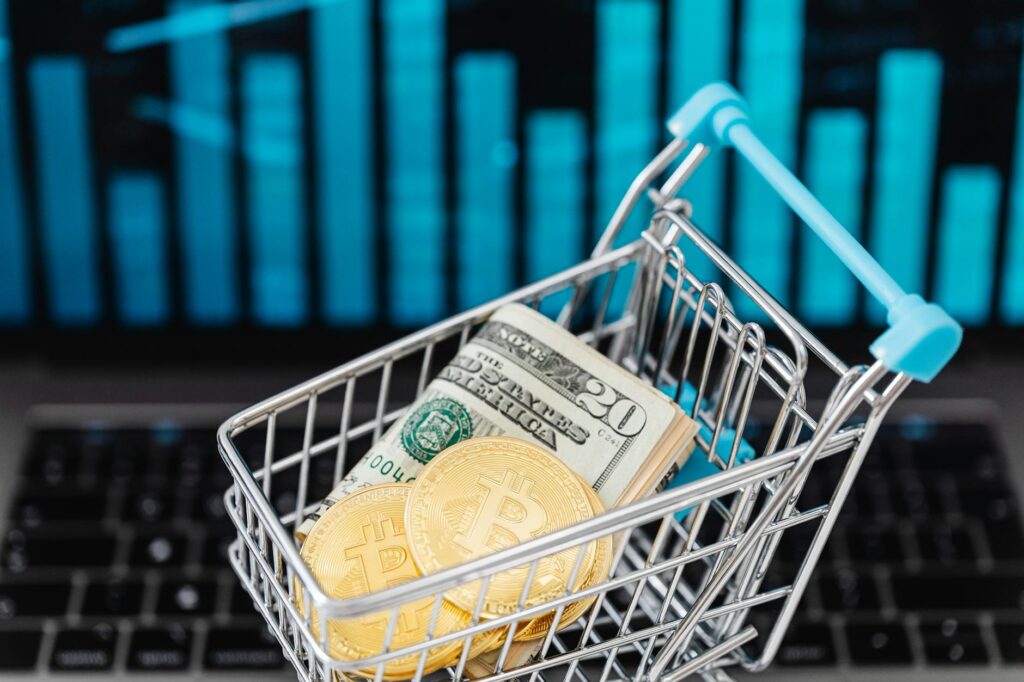
Online shopping is booming. Global retail e‑commerce sales are projected to reach $6.9 trillion by 2025, with about 2.77 billion people shopping online by then. Amid this explosive growth, environmental concerns are mounting and consumers are demanding action. Sustainability is no longer optional; it is central to competitive success.
What Is The Problem?
Convenience at a cost! The e-commerce boom brought unmatched convenience, but it also triggered a surge in waste. The World Economic Forum reports that e-commerce packaging waste rose 20% annually between 2020 and 2023.
Meanwhile, last mile delivery accounts for 53% of total shipping emissions, making it one of the most polluting legs of the supply chain.Consumers expect fast, free delivery and abundant product choices. But those expectations come at a hidden cost to the planet. Every next-day shipment, every oversized box, and every returned item adds to a growing carbon footprint. And as demand continues to climb, the pressure on e-commerce companies to act sustainably has never been greater.
Sustainability as Strategy: A New Business Mandate
Sustainability is no longer a niche concern, it is a strategic priority. According to a 2024 McKinsey report, 65% of Gen Z and Millennial consumers actively seek out sustainable brands, and 70% are willing to pay more for environmentally responsible products. This shift is pushing e-commerce leaders to rethink everything from sourcing to shipping.
Amazon has pledged to achieve net-zero carbon by 2040. Shopify now offers carbon-neutral shipping options by default for all orders processed via Shop Pay. Even fashion retailers like Zalando are committing to climate-neutral warehouses and more sustainable materials.
These initiatives are no longer window dressing. Brands that invest in sustainability today are not only reducing environmental impact but also improving customer loyalty, reducing operational costs, and future-proofing their businesses.
Why Sustainability Matters Now
According to eCommerce Fastlane and Gitnux, 73% of online shoppers consider sustainability when making purchases, and 60% are willing to pay more for eco-friendly options. Also, 55% of consumers have abandoned or walked away from purchases or a cart over sustainability concerns.
Across the industry, 16% of global retail greenhouse gas emissions in 2022 came from e‑commerce, with shipping accounting for around 10% of retail emissions. These numbers show one simple truth: people care, and brands must respond.
Technology As The Sustainability Accelerator
Technology is the single most powerful enabler of sustainable e-commerce. Artificial intelligence is being used to forecast demand more accurately, reducing overproduction and excess inventory. Machine learning algorithms now optimize shipping routes, saving both time and fuel.
Meanwhile, blockchain provides end-to-end supply chain transparency, enabling brands to prove ethical sourcing claims and reducing the risk of greenwashing. Companies like Everledger and Provenance are using blockchain to trace the lifecycle of products and ensure authenticity and sustainability.Eco-packaging innovations are also gaining traction.
Materials like mushroom-based packaging and biodegradable mailers are becoming viable alternatives to plastic. Loop, a circular shopping platform, partners with brands like Nestlé and Unilever to deliver products in reusable packaging, dramatically reducing single-use waste.
The Role of Regulation and Standards.
Governments are also stepping in. The European Union’s “Digital Product Passport” initiative, launching by 2027, will require e-commerce sellers to disclose the environmental impact of their products. In the U.S., the SEC is finalizing climate disclosure rules that will require large companies to report emissions data.
These policies will push companies toward transparency and accountability, closing the gap between marketing and measurable action. It also levels the playing field ensuring that sustainability is not just a brand differentiator but a compliance requirement.
Key Trends Shaping the Future
- Circular and Recommerce Models: Second‑hand and recommerce or reverse commerce are on the rise. Branded marketplaces for refurbished and resale goods boost product durability and sustainability goals. Platforms offering take-back, rental or resale options (like Patagonia, H&M, ThredUp) are pioneering an industry shift toward a circular economy, expected to reduce emissions by nearly 30% across the sector by 2030.
- Eco-Packaging & Carbon-Neutral Shipping: 80% of shipments in developed countries now use eco‑friendly packaging materials; biodegradable packaging rose by 22% from 2021–23. Observation now shows that carbon‑neutral shipping is becoming the standard. Brands increasingly offer options like longer transit, collection points, or offset delivery to reduce carbon footprints. We see over 65% of retailers have set sustainability targets for 2025, with 35% already adopting carbon‑neutral shipping policies.
- Transparency, Reporting & Accountability: Consumer demand for eco-transparency is high. 68% feel the environmental impact of online shopping isn’t disclosed appropriately; 70% favor brands with clear sustainability policies; and 62% trust brands with transparent reporting. On the other end, B2B sustainability matters too. 48% of corporate buyers will pay a 5% premium for sustainable products, and 36% will walk away from suppliers that don’t meet sustainability goals. This is 2025 and standardized ESG reporting and sustainability governance frameworks are becoming essential for retailers.
- Technology, AI & Thoughtful Design: Brands are using AI not only for personalisation, but also to foster sustainable choices via recommender systems that promote reuse, longer product life, and circular purchase journeys. AR/VR is helping to reduce returns by enabling virtual try-ons and realistic previews; cutting shipping waste and emissions.
Traceability and carbon accounting tools embedded in checkout systems enable real-time sustainability info and consumer choice. Cultural & Behavioral Shifts: Overconsumption is a growing concern. Social media enabled in‑app purchases may accelerate wasteful behaviour. Experts propose “social guardrails,” mandatory cooling‑off periods, and integrated circular-minded prompts to slow impulse buys.
Also, tools like “deliberation quizzes” or reminders about already-owned items can intercept impulsive orders and push consumers toward reuse options.
Related: Examining Revolutionary Changes in Online Shopping Patterns
What This Means for E-commerce Founders and Tech Teams
For tech entrepreneurs, developers, and e-commerce operators, sustainability is not just a values-based choice, it is a long-term business imperative. This shift opens opportunities to; Build platforms that minimise carbon impact by default, Integrate product traceability features via APIs, Develop supply chain analytics tools focused on sustainability, and offer eco-delivery modes and carbon tracking to end customers.
E-commerce startups that integrate sustainability into their tech stack from the beginning will have a significant edge. And tools that once felt “nice to have” would rapidly become table stakes.
What Brands Should Do Next
• Build Circular Models: Integrate pre‑owned channels, take‑back programs, rentals, and refurbishment offerings. These models resonate with eco‑customers and deepen their brand loyalty, while also reducing environmental impact.
• Optimize Logistics & Packaging: Invest in lightweight, reusable, recycled, or compostable packaging. Offer carbon-neutral or slower delivery options. Leverage electric vehicles, route optimization, and sustainable carriers.
• Embrace Transparency: Publish sustainability data-carbon emissions per shipment, sourcing practices, certifications, eco-labels. Integrate impact metrics into product pages and checkout. That level of transparency builds trust and conversion.
• Leverage Sustainable Tech: Use AI wisely to recommend sustainable alternatives, visualize eco‑friendly product pairings, or suggest reuse and rental options. Employ AR/VR to lower return rates and carbon-heavy shipping.
• Advocate for Cultural Change: Drive mindful consumer behaviour through creative design: cooling‑off nudges, reminders of existing wardrobes, and prompts to repair rather than replace. Join broader cultural conversations that redefine consumption norms.
Who Benefits Most?
• Consumers: Especially Millennials and Gen Z, who increasingly prioritise ethical, transparent brands and willingly pay premiums for them.
• Brands: That become sustainability leaders not just by avoiding harm, but by innovating in circular commerce, reducing waste, and pioneering new consumer engagement models.
• The planet: Through reduced carbon emissions, less packaging waste, and longer product lifecycles.
What The Future Looks Like: 2025 and Beyond
By mid‑decade, expect recommerce or reverse commerce to become mainstream, not niche. Circular subscription and product as a service models may become standard in home goods, fashion, and electronics. Regulatory pressure and investor expectations will push sustainability metrics into e‑commerce KPIs reporting, carbon accounting, and supply chain audits will be the norm.
Global sustainable e‑commerce market is projected to grow at a CAGR of 15.3%, growing from USD 15 billion in 2024 to USD 47 billion by 2032. E‑commerce platforms that innovate now by closing loops, reducing friction in sustainable choices, and investing in transparent operations will lead the next generation of truly responsible online retail.
Sustainability in e‑commerce is now mission critical. It is a competitive differentiator that demands smart action from circular models to eco‑shipping to behaviour shifting tools. Consumers expect more, legislation is tightening, and transparency is essential. The brands that seize these opportunities will build customer loyalty, future‑proof growth, and help shape a greener digital economy.We should all be working towards a greener digital economy.
The future of sustainability in e-commerce will be shaped by innovation, transparency, and bold action. The companies that succeed won’t just adopt greener practices, they’ll embed sustainability into their core technology and culture. As consumer expectations evolve and regulation tightens, the winners will be those who saw sustainability not as a checkbox, but as a growth strategy.







